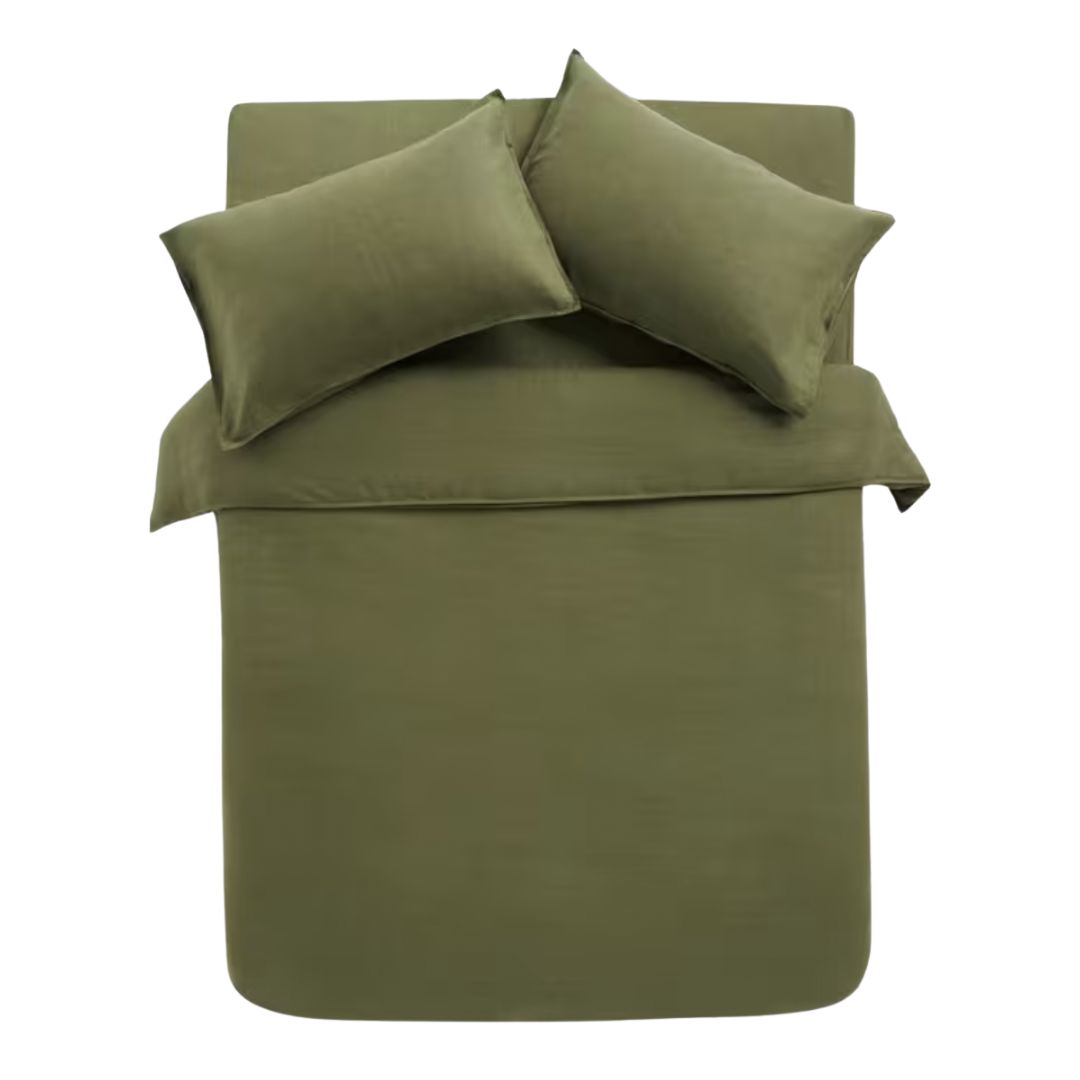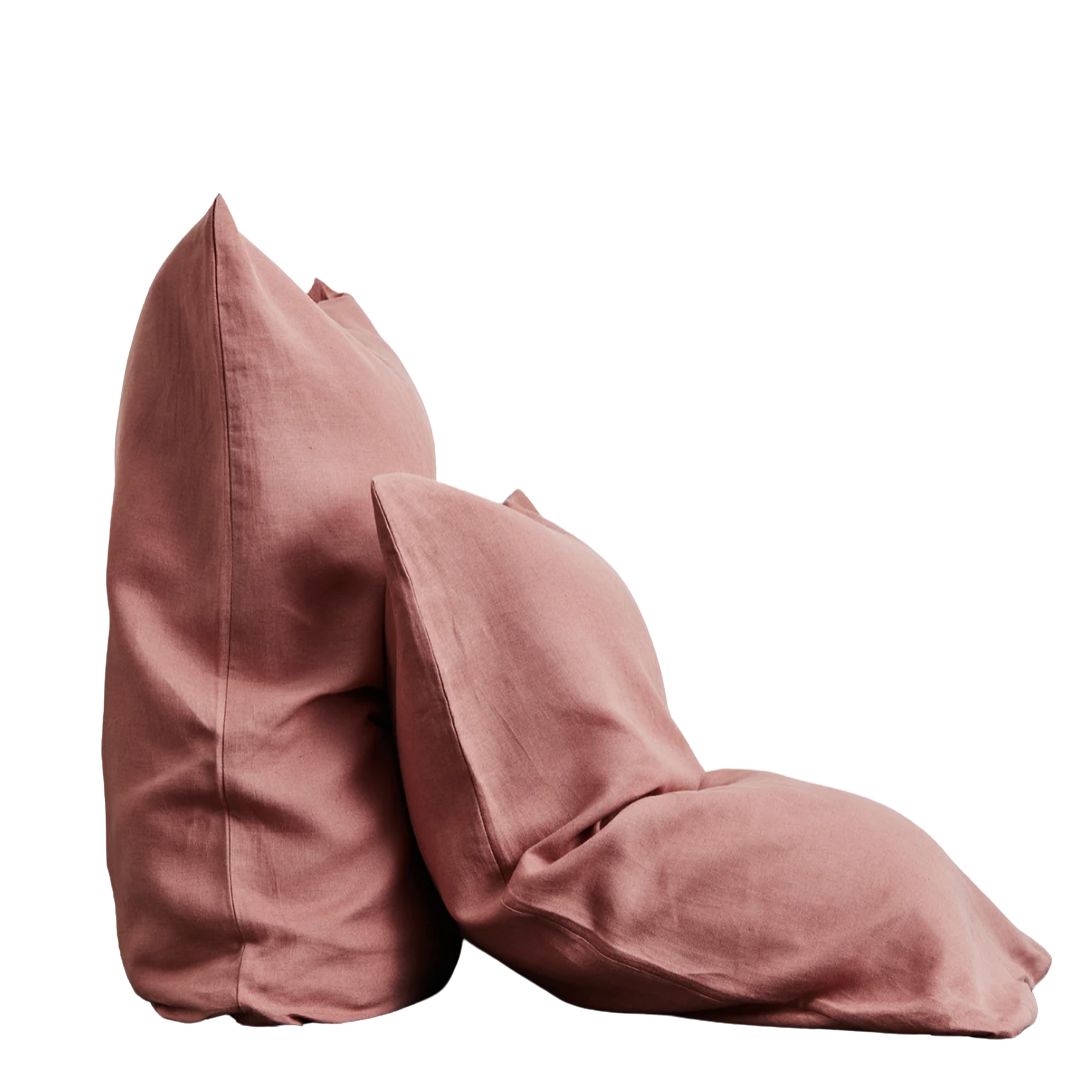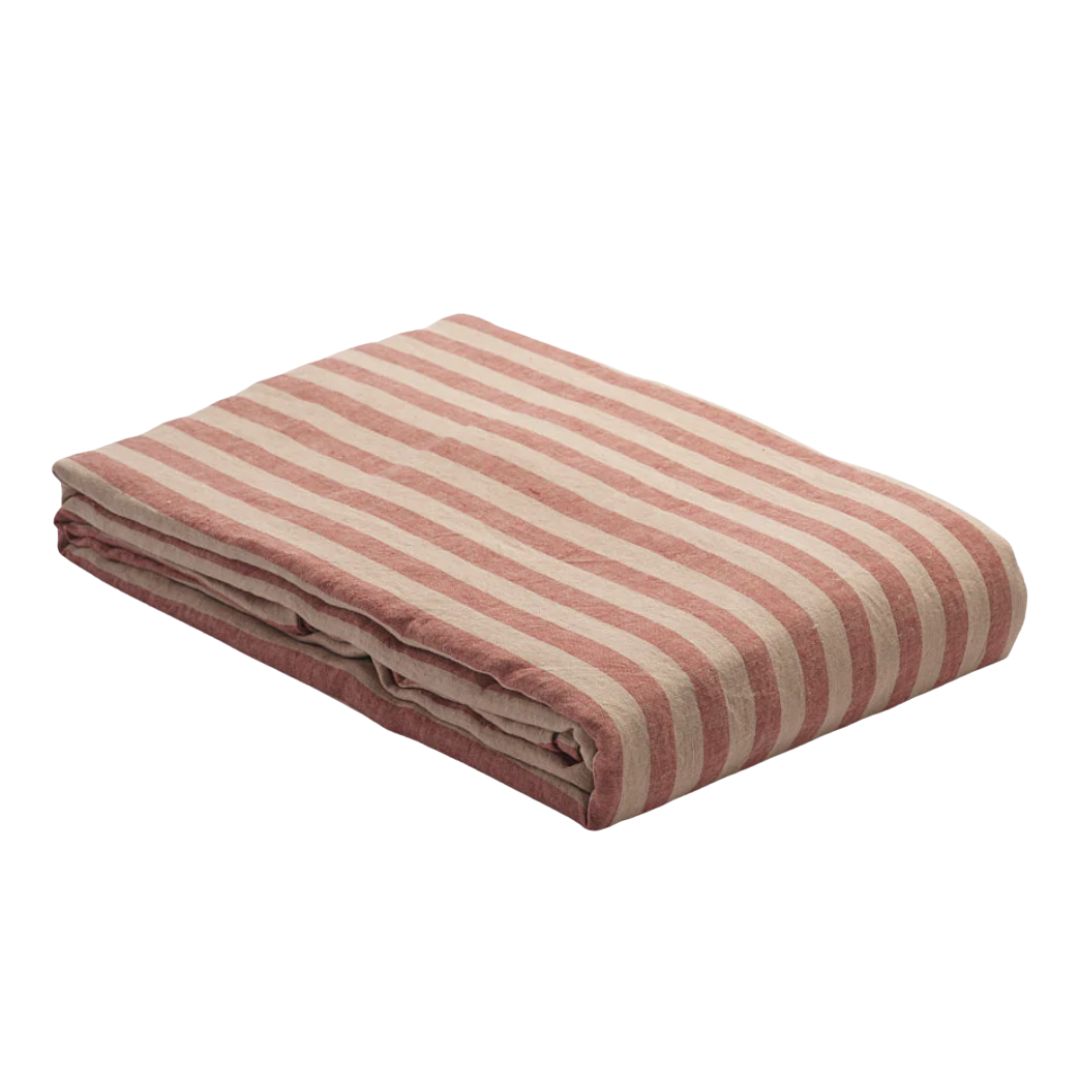6 Bed Linen Care Mistakes to Avoid If You Want Your Sheets to Look Good for Longer
Washing, drying, and storing your bed linen properly is the key to longer-lasting sheets that stay smooth and soft


For something that offers us so much comfort, we really don't give our bed linen enough attention. We all look forward to the feeling of crisp, fresh sheets when laundry day rolls around, and yet when it comes to the more tedious task of washing them, we bundle them into the machine and stick them on an automatic cycle without a second thought.
Alas, it's mistakes like these that can really cost you in the long run. Proper bed linen care should always be a priority. With the right washing and drying routine — and the right approach to storage — your bedding will stay fresher and softer for longer. Combine this with investment in the best bedding brands and worn, threadbare sheets will be a thing of the past.
If you want to make sure you're caring for your bed sheets properly, you've come to the right place. We asked experts to list the most common bed linen care mistakes they see time and time again, alongside tips on how to avoid them for better quality bedding (and a more comfortable sleep). It pains us to say it, but your current washing cycle probably isn't up to scratch, after all.
1. Using a Heavy-Duty Washing Cycle

DO INSTEAD: Choose a regular setting and a moderate temperature to protect the fabric
Clean, fresh bedding is one of life's small pleasures, but it turns out you don't need to be using that heavy-duty washing cycle to keep your bed linen looking its best. Quite the opposite; high agitation and spin speeds can actually damage the fibers of your bedding and cause them to wear faster.
The same goes for high temperatures, too. "Washing sheets at excessively high temperatures can cause shrinkage, lead to weakened fibers and reduce the lifespan and quality of the fabric," explains Jonathan Attwood, co-founder of bedding brand, scooms. While cool temperatures won't offer a sufficient clean, a medium setting should suffice. "Modern laundry detergents are also now effective enough at a temperature of around 30 - 40 degrees Celsius, so you can turn the temperature down," Jonathan adds.
To keep your best bedding sets spick and span, read the manufacturer's label and choose a cycle based on the material. A cotton cycle, for example, will be ideal for more durable cotton or linen sheets (although you may want to choose a lower spin speed that it automatically sets to), whereas bamboo or silk bedding will require a dedicated "delicate" wash. "If you have pillowcases or sheets with delicate embroidery or detailing, put these in a mesh laundry bag to protect them in the wash," adds Erika Smith, brand manager at Fine Linen and Bath.
2. Choosing the Wrong Detergent

DO INSTEAD: Pick a mild, non-bio detergent without any brighteners, bleach, or other harsh chemicals
Caring for your bed linen all starts with the right detergent, and no — you can't just rely on a bog-standard laundry capsule. "A lot of people think that using harsh detergents will help to make sheets feel even more luxurious, however, bleach and harsh chemicals can work to weaken the fibers, leading to sheets that won't last as long," notes Emily Attwood, scooms' other co-founder.
Instead, a mild, non-bio (enzyme-free) detergent is the best choice. "Pick a gentle, pH-neutral detergent made for fine fabrics," suggests Erika. "Commercial store brands are really too harsh to give the best care to good bedding. We like Heritage Park All-Purpose Detergent (available on Amazon) which is plant-based with a blend of laundry enzymes to break down and remove stains." When washing any protein-based fabrics like silk, however, she adds that enzyme-based detergents should be avoided as they'll break down the material.
3. Overloading the Washing Machine

DO INSTEAD: Sort your laundry prior to washing and avoid exceeding your machine's capacity
If you're not already washing your bed linen separately, you should be. "Throwing in towels, clothing or other textiles might seem like a great way to save time, but it can cause problems," says Jonathan. "Heavier items like towels can create friction against delicate bed linen, resulting in piling or wear, whilst mixing colored items with whites can lead to discoloration or dulling."
The same applies to overloading, too. "When too many sheets are crammed together, the detergent and water can't circulate properly," adds Emily. "This will lead to inadequate cleaning and could lead to a build-up of detergent residue, which over time will cause damage."
Of course, the amount of bedding you can safely wash at one time will depend on the size of your machine. As a rule of thumb, Emily says your drum should only be about two-thirds full for optimal washing. "Sort your bed linens by color and weight to ensure color consistency and a balanced load," instructs Erika. "Wash the whole set together for even wear and fading over time."
4. Treating With Fabric Softener or Dryer Sheets

DO INSTEAD: Opt for natural softening methods, like a splash of vinegar or organic wool dryer balls
We all love crisp sheets, but not ones that feel scratchy. Soft bed linen is the ultimate luxury, but if you're wondering if you should use fabric softener on bed sheets, the answer is "no".
"Fabric softeners can leave behind a residue that coats the fibers, making them less absorbent and reducing their breathability," says Emily at scoom. The same goes for dryer sheets, too, which also have a softening agent on them. "Both these items leave a waxy coating on your bedding," adds Erika.
Fortunately, there are plenty of natural ways to give your bedding that velvety feeling without relying on synthetic softeners that contain chemicals. "To naturally soften your sheets and speed drying time, toss in a set of organic wool dryer balls (available at Amazon)," suggests Erika.
Jonathan has a cheap hack up his sleeve, too. "If you want the softness without residue, then try adding a bit of white vinegar to the rinse cycle as a natural alternative," he says. "It'll keep your sheets soft without affecting the breathability."

Erika Smith is the Brand Manager at Fine Linen and Bath, a leading online retailer of luxury home linens. They sell bath and hand towels from the finest European and American textile companies including Matouk, SFERRA, Abyss, Graccioza, and more.
5. Not Treating Stains Quickly

DO INSTEAD: Treat messes with an appropriate stain remover as soon as they happen to ensure your sheets stay fresh and bright
Our bed linen sees a lot, so stains and spills are common. The real mistake is failing to act fast and treat them on the spot. Not only are our sheets typically white and therefore far more susceptible to staining, but your bed is also the last place you want to harbor bacteria or allergens.
"Treat any stains as soon as they occur with an enzyme-based stain remover," says Erika. "You can apply it directly or soak your bedding in it." When treating stains, she also recommends doing your research to find out the best protocol for that particular stain and type of bedding. "Some stains, like blood, should be treated in cold water, as washing them in hard water can cause them to 'set' into the fabric," she adds.
6. Storing Sheets While Damp or Creased

DO INSTEAD: Fold bedding and store it in a cool, dark linen cabinet to keep it fresh and clean for longer
When it comes to storing bed linen, many of us are guilty of tossing our sheets haphazardly into our linen cupboard. While bed sheets might be awkward to fold (especially the dreaded fitted sheet) proper folding of your bedding will minimize creases and keep your bed linen fresh for longer.
You should also make sure you allow your bedding to dry properly before you store it to prevent dampness, which can lead to fusty smells and bacterial growth. If you have one, use an airing cupboard, but don't rely on your dryer; high dryer settings can shrink your sheets. (Line drying is usually best.)
"The best thing you can do is store sheets in a cool, dry cabinet," says Erika. "You can prevent dust by putting them in clean fabric bags, but always avoid plastic."
Emily and her partner Jonathan founded scooms after moving back to Surrey from California, where Jonathan had been working for a digital health start-up company. The family needed a lot of new bedding, duvets, pillows and bed linen. It had to be amazing quality and it had to be suitable for dust mite allergy sufferers too, as Emily is allergic to dust mites. They set off to create an environmentally friendly, sustainably sourced, dust mite allergy-resistant duvet, pillow, and bed linen set, founding the brand scooms.
FAQs
Is It Necessary to Wash New Bed Linen Before Use?
Buying a fresh new set of sheets is a joyous occasion, and although the urge to put them straight on your bed is probably overwhelming, it's always best to wash new bed linen before use.
"Although new sheets may look clean when you buy them, they can often contain chemicals from the manufacturing process like dyes, preservatives, or finishing agents," says Emily. "Also, they may have picked up dirt, dust, or residue from the packaging and transport process, as well as being stored until you buy them. All of these could lead to skin irritation or allergies, which is why it's so important to wash new sheets before using them."
We all deserve to be swaddled in fresh, soft bedding every night, but that requires due care and attention when it comes to looking after your bed linen.
Of course, if you haven't yet picked up your sheets, take inspiration from these ways to dress a bed to make sure you invest in something that both looks good and feels timeless.
Be The First To Know
The Livingetc newsletters are your inside source for what’s shaping interiors now - and what’s next. Discover trend forecasts, smart style ideas, and curated shopping inspiration that brings design to life. Subscribe today and stay ahead of the curve.

Lilith Hudson is a freelance writer and regular contributor to Livingetc. She holds an MA in Magazine Journalism from City, University of London, and has written for various titles including Homes & Gardens, House Beautiful, Advnture, the Saturday Times Magazine, Evening Standard, DJ Mag, Metro, and The Simple Things Magazine.
Prior to going freelance, Lilith was the News and Trends Editor at Livingetc. It was a role that helped her develop a keen eye for spotting all the latest micro-trends, interior hacks, and viral decor must-haves you need in your home. With a constant ear to the ground on the design scene, she's ahead of the curve when it comes to the latest color that's sweeping interiors or the hot new style to decorate our homes.
-
 This Outdoor Lounger Is the Color of the Season for Garden Furniture — And It's on Sale This Weekend
This Outdoor Lounger Is the Color of the Season for Garden Furniture — And It's on Sale This WeekendThis year, it's all about the contrast, and this bright, sunny hue is the perfect foil to your green outdoor spaces
By Hugh Metcalf
-
 Kelly Wearstler Designed an Animal Hospital Where "Anxiety Just Melts Away", and I'm Taking Notes for My Own Home
Kelly Wearstler Designed an Animal Hospital Where "Anxiety Just Melts Away", and I'm Taking Notes for My Own HomeThe renowned designer's foray into healthcare demonstrates have even the most functional of spaces can still be design-forward
By Devin Toolen


